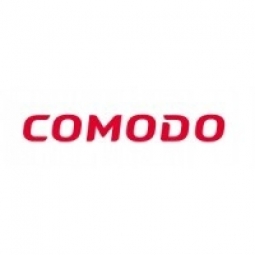适用行业
- 电子商务
- 国家安全与国防
适用功能
- 质量保证
用例
- 欺诈识别
- 篡改检测
服务
- 网络安全服务
关于客户
Zamberg.com 是高品质德国美容产品的领先经销商。它是德国索林根工匠制造的产品的最大经销商,也是许多欧洲产品的美国独家经销商。尽管该公司在制造精良的德国钢制美容产品方面实力雄厚,但在赢得网站上新客户的信任方面仍面临挑战。该公司已经在市场上占据了稳固的地位,但对网络欺诈的担忧是阻碍 Zamberg.com 实现更高销售增长的主要障碍。
挑战
Zamberg.com 是一家领先的高品质德国美容产品经销商,在赢得网站上新客户的信任方面面临着重大挑战。尽管是德国索林根工匠制造的产品的最大分销商,也是许多欧洲产品的美国独家分销商,但该公司仍在努力应对消费者对网络欺诈的普遍恐惧。这种恐惧影响了 24% 的消费者,它源于诈骗、网络钓鱼、域欺骗和“中间人”攻击的可能性。由于缺乏一种独特的方法来向客户保证网站的真实性和安全性,Zamberg.com 的销售增长潜力受到了阻碍。
解决方案
为了应对这一挑战,Zamberg.com 求助于网络安全公司 Comodo,以帮助赢得用户信任并向客户保证网站的真实性和安全性。 Zamberg.com 实施了 Comodo 的两个计划:EV SSL 证书和 HackerProof 软件。 EV SSL 证书使用广泛的背景调查来推广真实的网站。当站点具有 EV SSL 证书时,页面的地址栏会变成绿色,表明其真实性。具有此证书的页面还带有印章,提供网站所有者的信息,证明该网站对其内容负责。另一方面,HackerProof 软件向客户强调该网站不会受到黑客攻击。它向黑客暴露任何漏洞,并向用户表明相同的漏洞,有助于消除客户对其提交到网站的信息的安全性和隐私性的任何疑虑。
运营影响
数量效益

Case Study missing?
Start adding your own!
Register with your work email and create a new case study profile for your business.
相关案例.

Case Study
Data Capture for Afghanistan Forces
Electronic equipments on the field of Afghanistan provided information on the status of the vehicle and to identify potential threats surrounding it to the British Force. The monitoring and interpretation of this data requires robust and sophisticated digitization for data capture and communication.

Case Study
Digital Transformation of Atlanta Grout & Tile: An IoT Case Study
Atlanta Grout & Tile, a Tile, Stone & Grout restoration company based in Woodstock, Georgia, was facing challenges with its traditional business model. Despite steady growth over the years, the company was falling behind the web revolution and missing out on the opportunity to tap into a new consumer base. They were using independent software from different vendors for each of their department information and workforce management. This resulted in a lot of manual work on excel and the need to export/import data between different systems. This not only increased overhead costs but also slowed down their response to clients. The company also had to prepare numerous reports manually and lacked access to customer trends for effective business decision-making.
Case Study
Enhancing Security and Compliance in Remitly's Global Money Transfer Service with Fastly
Remitly, an online remittance service, was faced with the challenge of securing its proprietary global transfer network. The company needed a security solution that could meet PCI requirements and protect customers' sensitive transactions through its mobile application. The solution had to be capable of defending against new and emerging attack types without impacting performance. Remitly also had to deal with irregular traffic patterns, such as a sudden spike in account transfers from a small network segment on the Pacific coastline of South America. The company needed to determine in real time whether such traffic indicated an attack or valid requests. A traditional web application firewall (WAF) would not be able to distinguish this traffic, potentially leading to customer frustration if the IP was blacklisted.

Case Study
Major Aerospace Company Automates Asset Management
The O&M division of an aerospace and global security company was using spreadsheets to manually track more than 3,000 assets assigned to students and staff. Maintaining audit trails for this high volume of equipment became increasingly time-consuming and challenging. The chore involved knowing precisely what equipment was on hand, what had been issued, its location and the name of the custodial owner of each item. Every aspect of this task was carried owner of each item. Every aspect of this task was carried out by individuals with spreadsheets. Manually documenting the full lifecycle of each asset added to the burden. This included tracking maintenance requirements and records, incidents and damages, repairs, calibrations, depreciation, and end-of-life data.

Case Study
IFFCO Boosts IT Performance and Innovates Agriculture with Oracle Cloud
Indian Farmers Fertiliser Cooperative Ltd. (IFFCO), the world’s largest manufacturer and marketer of fertilizers in the cooperative sector, was facing several challenges in its quest to innovate and improve the livelihood of farmers in India. The organization had recently launched a new product, nano urea, which brought new demands to IFFCO’s cloud computing needs. The organization needed a reliable cloud vendor to support the processes of 6–7 new manufacturing plants during the upcoming year, enhancing its production capability 300–350 million bottles of nano urea to meet increasing demand. IFFCO’s cloud adoption was driven by a need to innovate. The organization wanted capabilities for a dynamic business that can adapt to the changing needs of the market while growing fast. However, it was inhibited by rigid on-premises data center deployments and the overhead of maintaining legacy systems. IFFCO wanted to apply the elasticity and availability of cloud for improving overall performance of applications at lowest possible operational overhead. Lastly, IFFCO needed to provide the benefits of its technology to all its stakeholders, including employees, members, transporters, and farmers, some of whom have limited literacy. To accommodate all stakeholders, IFFCO wanted to add a voice interface to its applications.

Case Study
Securing a Large Data Center in the EMEA Region: An IoT Case Study
A leading data-center operator in the EMEA region, with multiple facilities spanning over 25,000 square meters, faced significant security challenges. The operator experienced interruptions in their internal IT network due to unsupervised work of third-party technicians. Despite having a high-end building control system that provided 24x7 monitoring and control to all the building’s infrastructure, the data center was vulnerable from a cyber perspective as it was connected to the IT network infrastructure. The operator launched an urgent OT cyber security project that included both IT-OT network segmentation and OT network asset mapping and anomaly detection. The main objectives were to harden the security of the server systems, secure the facility’s power supply and server cooling system, strengthen the segmentation between building and operational systems, create a visual OT network map, and set up a system for presenting supply-chain attacks that may threaten the data center through equipment vendors’ maintenance activities.







